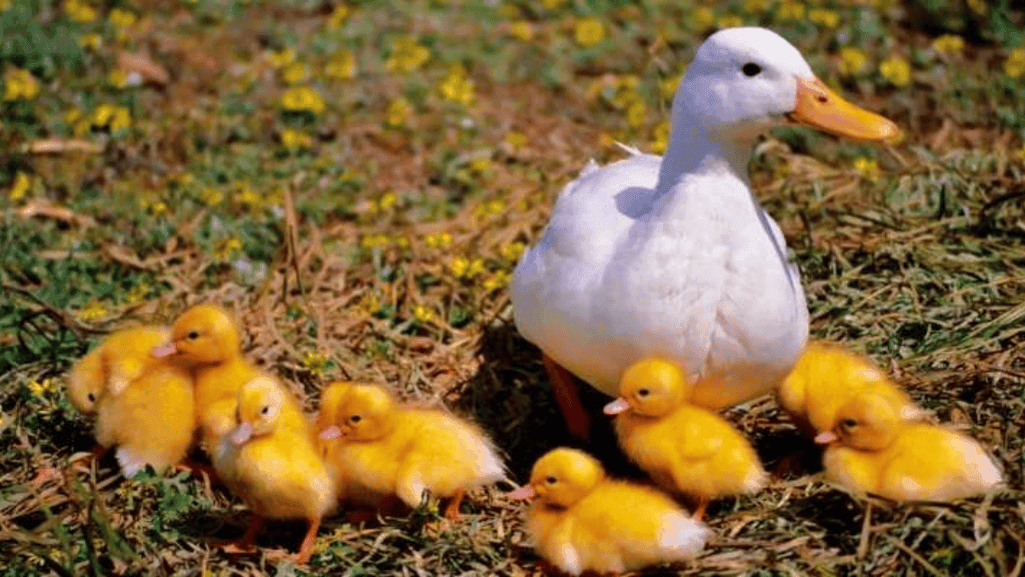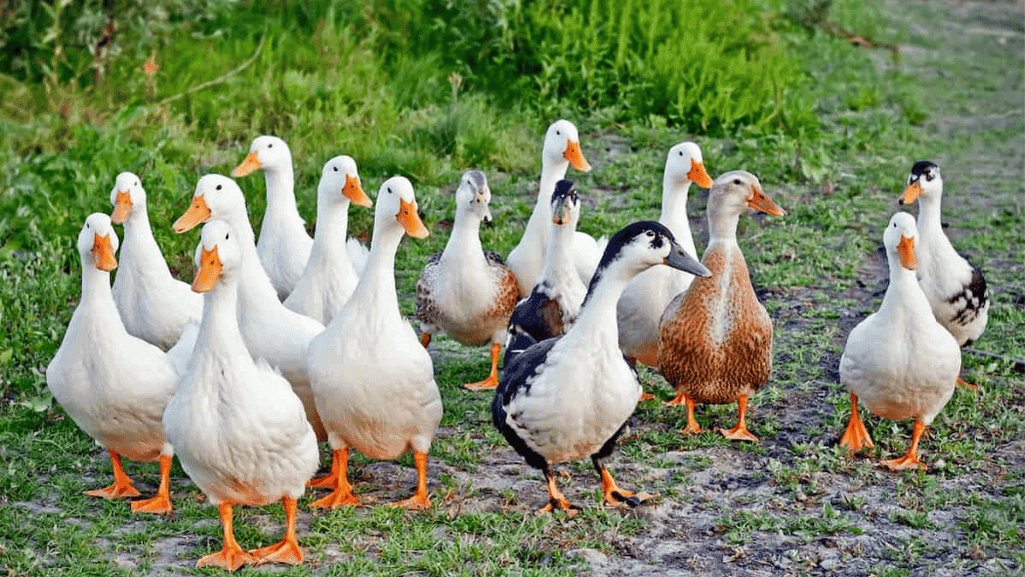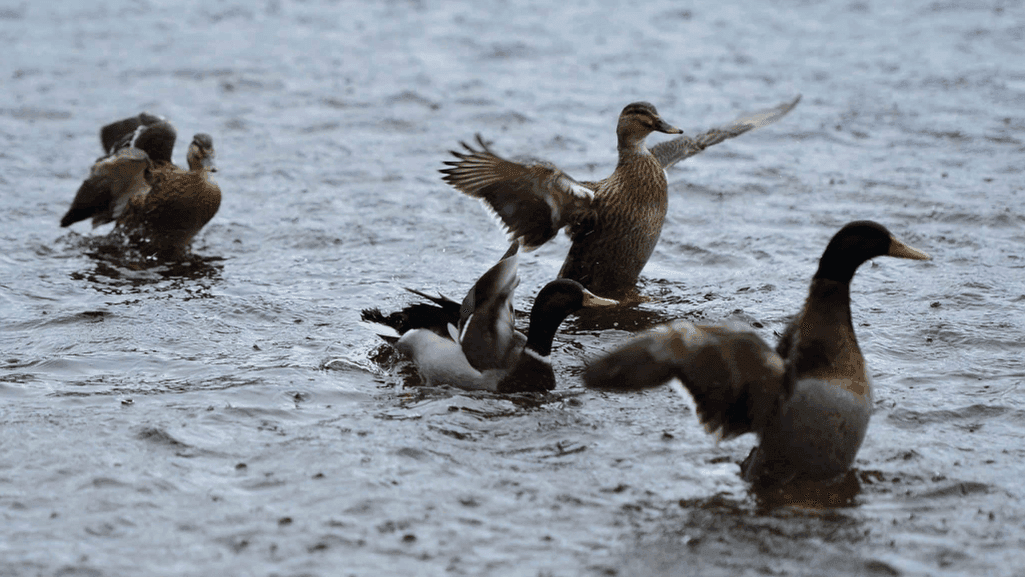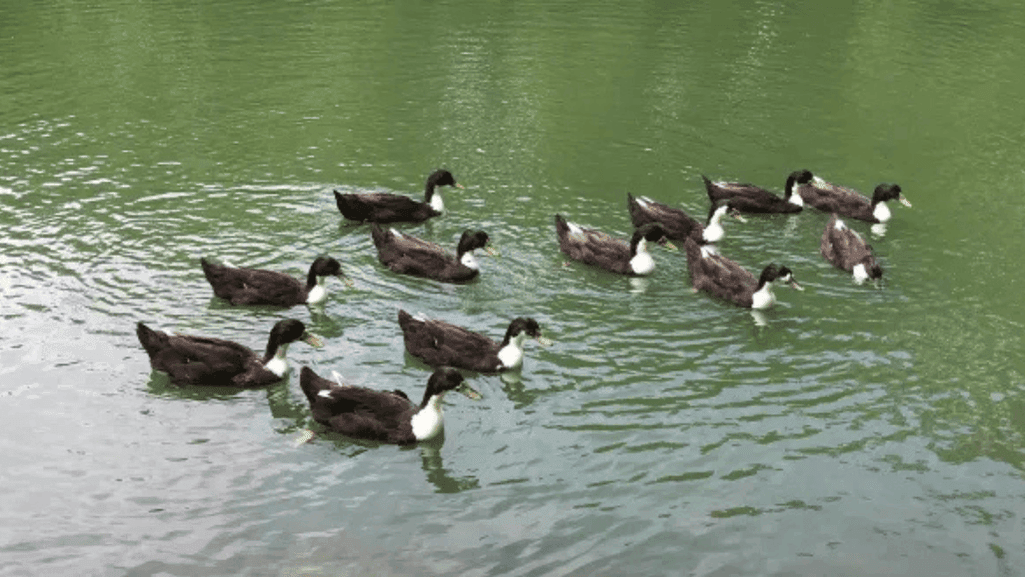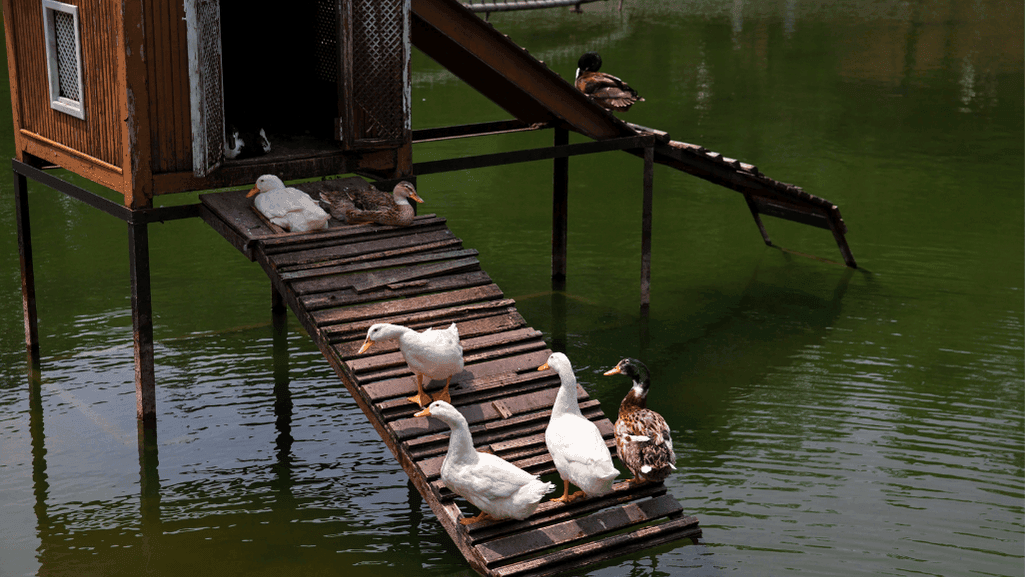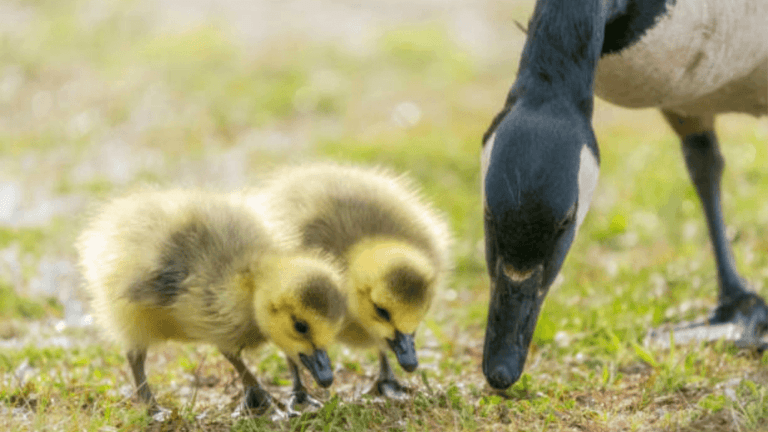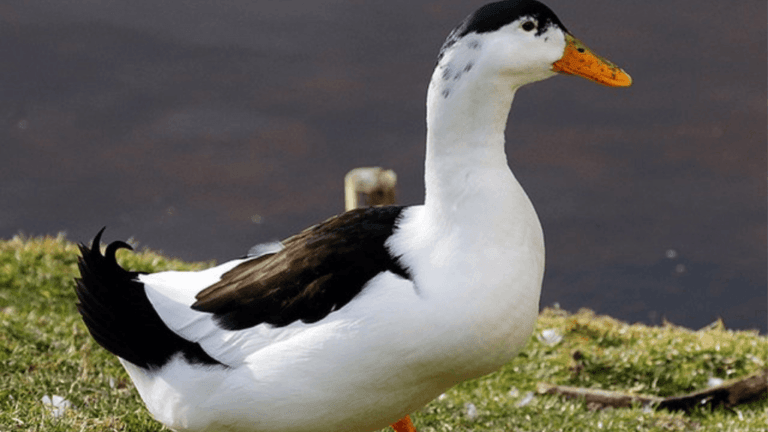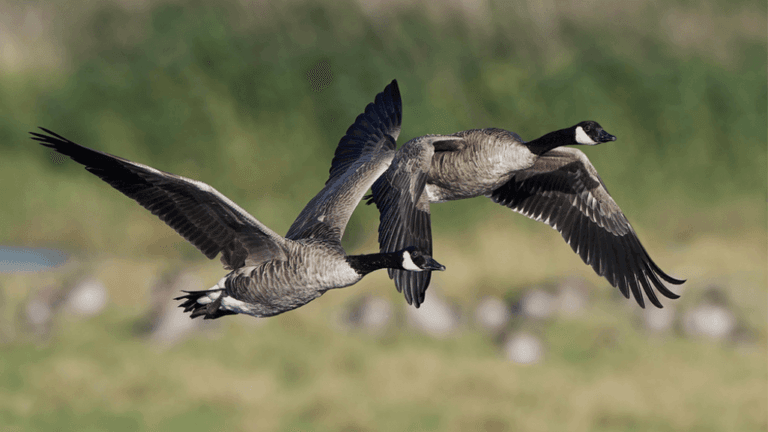Raising ducks is a fun and rewarding experience. It adds a special touch to any home. When it’s time for ducklings to move from a brooder to the outdoors, it’s a big step in their growth.
Wondering about the ducks outdoor age requirement? It’s important to know when they’re ready. By 6 weeks, ducklings start to grow feathers and can begin exploring outside if the weather is good. By 8-10 weeks, they should have all their feathers and be ready for the outdoors.
But before letting them outside, make sure they’re warm. Ducks need a cozy 90°F in their first week of life. Check out this link for more tips on raising ducklings.
Key Takeaways
- Ducklings need a warm brooder at 32°C / 90°F at first, with the temperature going down each week.
- It’s best to introduce them to the outdoors around 6 weeks old, when it’s warm enough and they have all their feathers.
- Give them the right food, like waterfowl crumbs or unmedicated chick crumbs, to help them grow strong and healthy.
- Make sure their outdoor space is safe from predators and harsh weather.
- They need clean water to drink, as they drink more as they get bigger.
- Feed them niacin to help their bones grow strong, moving from chick feed to a waterfowl diet.
- Watch how they’re doing and adjust their brooder and outdoor time based on their age and the weather.
Understanding Duck Development Stages
Knowing how ducks grow helps us figure out when they’re ready for the outdoors. It’s important for their health and follows their natural growth path.
Incubation Period and Hatchlings
The start of a duck’s life is fascinating, as shown on Ducks New World. Mallard eggs incubate for 26-30 days before ducklings hatch. They can walk, swim, and eat on their own right away.
The first weeks are very important. Keeping the brooder warm at 90°F helps them stay safe from cold. This is a big risk for young ducks.
Early Life Characteristics
- Ducklings start with high-protein starter feed for fast growth. Switch to grower feed by the third week to meet their needs.
- By three weeks, ducklings can swim, as The Cape Coop suggests. But, watch them to avoid getting too cold. Their oil glands take about five weeks to work fully.
- Exploring outdoors lets ducklings eat insects and small plants. This is good for their growth and immune system.
The early stages are critical for survival and setting the stage for strong adult ducks. They can do well in both safe and natural settings.
Appropriate Age for Outdoor Introduction
As caretakers of young ducklings, knowing at what age can ducks go outside is key. After the first weeks indoors, it’s time to let them explore outside. This is when they start to grow and feel better.
The best time to start is around 6 weeks. But, it’s a slow step. They start with short times outside, watched closely. By 8-10 weeks, they have all their feathers. This is when they can handle the weather and stay warm.
Ideal Time Frames
Ducks should first go outside at about 6 weeks. But, it’s a slow start. They begin with short times outside, watched closely.
By 8-10 weeks, they have all their feathers. This is when they can handle the weather and stay warm.
Factors Influencing Outdoor Readiness
Being ready for outside depends on more than just age. Health and breed matter too. Also, having a safe and predator-free outdoor space is key. Watch how they do in short times outside to see if they’re ready for more.
Knowing about ducks outdoor exposure age helps keep your ducklings healthy and growing. As they grow, being outside helps them physically and teaches them survival skills. Make sure their outdoor area is safe. Start their outdoor time around 6 weeks, and increase it as they get closer to 8-10 weeks.
Benefits of Outdoor Exposure for Ducks
Introducing ducks to the outdoors early can be very beneficial. It balances their safety and health. A controlled outdoor exposure, following age guidelines, boosts their physical and mental health.
Physical Health Improvements
Ducks in outdoor environments get stronger muscles and better heart health. Azygours’ studies show that ducklings raised outdoors near adult birds grow stronger faster. They also get used to cold weather quickly.
These ducks also grow their feathers faster, showing they are healthy and well-developed. This is unlike ducks raised indoors.
Social Interaction
Raising ducks outdoors helps with their social skills. Ducklings learn important social rules, like who’s in charge, early on. Azygours’ research shows this helps them feel confident and stable in their group.
This early social learning reduces stress and improves their long-term health.
The benefits of early outdoor exposure for ducks are clear. By following age guidelines and being careful, owners can greatly improve their ducks’ lives. This ensures a happy and healthy flock ready to enjoy their natural surroundings.
Signs That Ducks Are Ready for the Outdoors
As ducklings grow, it’s important to know when they’re ready for the outdoors. You can tell by looking at their behavior and health. These signs help you know if they’re ready to go outside.
Behavioral Indicators
Some behaviors show if ducklings are ready for the outdoors. For example, if they start to forage actively, it’s a good sign. They’re curious and can find food on their own.
Also, if they get along well with other ducks, they’re ready for a bigger group. Being alert to dangers shows they’re smart enough for the outdoors.
Health Checks
- Feather Growth: They need to have all their feathers, including waterproof ones. This keeps them warm and dry outside.
- General Vitality: They should be full of energy and growing well. If they seem tired or grow unevenly, they might not be ready.
- Regular Health Monitoring: Before letting them outside, check their health often. This makes sure they’re not sick and can handle the outdoors.
Figuring out when ducklings are ready for the outdoors is key. It’s about watching their growth and behavior. Following the right age guidelines helps keep them safe and healthy outside.
Preparing the Outdoor Environment for Ducks
To make sure ducks do well outside, we need to prepare carefully. This is true for ducks outside age and ducks age for outdoor access. When ducklings are ready to go outside, we must think about their safety and health.
Safe Space Requirements
First, we need to make a safe place for ducks. The duck house should have enough space for each duck to move around. It’s also important to keep the area clean to avoid sickness.
Having a strong shelter is key to keep predators away. Ducks need a place to hide and feel safe. Easy cleaning is also important to keep the area healthy.
Weather Considerations
The weather affects ducks a lot when they go outside. In cold weather, they need something warm to stay cozy. But in hot weather, they need shade and water to cool down.
Ducks can’t swim until they have all their feathers. So, we must protect them from rain and water to keep them safe.
As ducks get older and go outside, these steps help them grow well. Keeping the weather right is important for their health.
Understanding when ducks are ready and what they need is key. Every step we take, from building to keeping them safe, is important. It helps them live a long and happy life.
Gradual Introduction to Outdoor Living
Introducing ducks to the outdoors is a big step in their growth. It’s important to know when can ducks go outside based on their age and the weather. Ducklings can go outside for a bit when they’re about 14 days old and it’s over 70°F (21.1°C).
For a smooth transition, it’s key to introduce ducks slowly. This helps them get used to their new surroundings.
Steps for Acclimatization
- Begin by letting ducks spend time outside in a safe pen for short periods. Increase the time as they get more comfortable.
- Make sure the outdoor area has good shelter and protection from predators. Use steel wire fencing and cement slabs for safety.
- Keep an eye on the temperature. Ducklings need certain temperatures for comfort, from 84-90°F in the first week to 55°F by week 6.
Monitoring Their Response
It’s important to watch how ducks react during their first outdoor times. This helps you see if they’re ready and if you need to make changes.
- Look for signs of happiness like foraging, playing in water, and socializing with other ducks. These are good signs they’re adjusting well.
- Check for any signs of stress or health problems. If you see these, you might need to slow down their outdoor time or make their environment better.
- Keep changing the outdoor area as they grow and develop. Make sure they have enough space and safe flooring to avoid getting hurt.
Slowly introducing them to the outdoors helps ducks adjust physically and learn natural behaviors. Making sure they’re comfortable and safe during ducks outdoor time requires careful planning and watching them closely.
Common Outdoor Risks for Young Ducks
Introducing young ducks to the outdoors is a big step in their growth. It’s influenced by their ducks outdoor exposure age. Knowing when can ducks go outside is key for their safety and health. While fresh air and nature are great, there are risks that could harm them.
Predators and Other Threats
Predators like foxes and hawks are a big danger for young ducks outside. These animals are very sharp and can be a serious threat, mostly at dusk and dawn. Keeping ducks safe by using secure enclosures and watching them outside can help a lot.
- Secure runs with 15-20 square feet per duck keep them safe.
- Locking ducks up during high-risk times is very important.
- Natural covers like bushes or tall grasses can protect ducks from hawks.
- Livestock animals and roosters can scare away predators and alert you.
Environmental Hazards
There are also environmental dangers for ducks outside. Young ducks can get sick from toxic plants, pesticides, or bad water. Watching them closely and keeping their habitat clean is very important.
- Stay away from areas with toxic plants or pesticides.
- Make sure water is safe and shallow to prevent drowning.
- Change water and clean feeding areas often to avoid health problems.
Thinking about these dangers is key to safely letting young ducks explore outside. Regular checks and a safe place can make their outdoor time fun and healthy.
Final Considerations for Duck Owners
Creating a safe space for ducklings is more than just a number. It’s about caring, watching, and learning. From the nest to the outdoors, it’s all about building a strong bond. Research shows that ducklings can recognize voices before they even hatch.
Being kind from the start helps them become friendly and trusting. This is key to a lasting connection with your feathered friends.
Ensuring Ongoing Safety
Keeping them safe is a top priority. Ducks need enough space to move around. Cornell Duck Research Lab says each duck needs at least 3.02 square feet of floor space.
Holderread’s guide suggests a secure yard with 50 square feet per bird. This ensures they stay healthy and happy. To avoid skittishness, establish a regular feeding schedule. This builds trust and keeps them friendly.
Long-Term Health Strategies
Knowing when to let ducks outside is just the start. Daily checks are vital to understand their needs and spot health issues. Clean water and the right food, like pellets for adults, prevent mess and waste.
Regular health checks and watching for behavior changes are key. Ducks can live up to 7 years or more. Keeping up with their care is essential for a happy relationship. For more on caring for different birds, check out Ducks New World.


